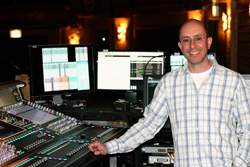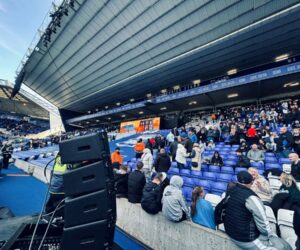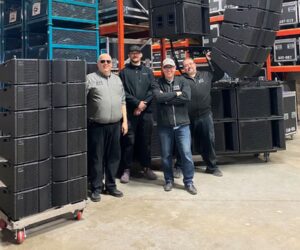After dazzling audiences on Broadway, and scoring a total of twenty prestigious Tony and Drama Desk Awards, including Best Sound Design, the theatrical adaptation of the popular movie, “Billy Elliot” is planned to hit the road on two simultaneous U.S. tours later this year.
Based on the New York production, both touring productions will use customized DiGiCo SD7T’s at front of house and substage, and SD8’s to mix the band’s monitors, as specified by sound designer Paul Arditti.
For the Broadway production, which launched in 2008. Arditti configured a DiGiCo D5T system from the ground up with help from associates John Owens and Tony Smolenski, and Masque Sound, the US-based theater sound specialist.
For the two new touring outfits, Arditti chose the SD7T / SD8 combination with the guidance of Masque Sound as well as DiGiCo’s Product Specialist, Dan Page.
“Once the ‘T’ software for the SD7 was released, which happened at the end of 2009 when Andrew Bruce of Autograph Sound Recording used an SD7T at the National Theatre in London for ‘Mother Courage’, the time was right for making the move,” said Arditti.
“I admit that I am committing to the SD7T earlier than I would normally prefer but I felt confident specifying a console that is at the beginning of its lifespan, enjoys the full attention of DiGiCo’s designers, and is still undergoing software development.”
“These tours might still be running in three years or more, and I would like them to be mixed on a current, rather than legacy, console.”
“In preparing the new console, Masque and DiGiCo, as usual, have been great to us…At the end of the day, we found the T software on the SD7 to be very elegant and integrated.”
The SD7T offered Arditti greater input and output capacity with which to manage all of the production’s 137 inputs within the one console—comprised of an Orchestra/Band Rack of 43 channels, an RF Rack of 49 channels for radio mics and other miscellaneous mics, a Local Rack for 11 channels of outboard reverbs and AES, and 34 MADI channels which handle sound effects and music playback.
“Some of the 34 channels of sound effects and playback were previously sub-mixed on a DM1000,” he added, “but now we’re able to accommodate these on the SD7T. The only remaining submix is the mix of our 96 tap mics. These are built into the show deck, and arrive as a stereo pair at the SD7T via a DM2000 located substage.”
“We have also cut some outboard reverbs this time round, and I am now also using some of the onboard reverbs and effects on the DiGiCo SD7T, which sound very good. The extensive crosspoint delay matrix within the SD7T has also allowed me to eliminate one of the two DME64s I was using for loudspeaker control.”
“For the production period of Tour 1, we also have a DiGiCo EX-007 Expansion Surface next to the main surface front-of-house, and this allows me to access all parts of the console without disturbing our excellent mixer, Brian Moore. For Tour 2, I am cutting both DME64s from the design, and I will make even more use of the matrix in the SD7T.”
Output requirements for the show include 21 matrix, 22 mono aux, 6 stereo aux, and 6 AES outputs to outboard reverbs. In addition, they’re using separate vocal and band systems made up of Meyer Melodies for the vocal systems, divided into 6 large arrays, and Meyer UPQs for the band.
All the delays, front fills and side fills handle both band and vocals. The 106 individual loudspeakers for these systems are delayed within a DME64 into three vocal zones and a stereo band system, with Meyer Galileo’s for the system EQ. “All the onstage effects speakers, stage monitoring systems, and surround speakers are balanced, delayed and EQ’d within the SD7T,” said Arditti.




















